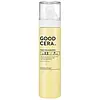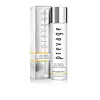What's inside
What's inside
 Key Ingredients
Key Ingredients

 Benefits
Benefits

 Concerns
Concerns

 Ingredients Side-by-side
Ingredients Side-by-side

Water
Skin ConditioningMethylpropanediol
SolventPentylene Glycol
Skin ConditioningGlycerin
HumectantDiphenyl Dimethicone
EmollientTriethylhexanoin
MaskingPolyglyceryl-10 Myristate
Skin ConditioningXanthan Gum
EmulsifyingAmaranthus Caudatus Seed Extract
Skin ConditioningUlmus Davidiana Root Extract
Skin ConditioningCentella Asiatica Extract
CleansingFicus Carica Fruit Extract
HumectantBacillus Ferment
Skin ConditioningEthylhexylglycerin
Skin ConditioningSodium Citrate
BufferingHydrogenated Lecithin
EmulsifyingCarbomer
Emulsion StabilisingCitric Acid
BufferingDisodium EDTA
Dipropylene Glycol
HumectantButylene Glycol
HumectantDecyl Glucoside
CleansingCitrus Aurantium Bergamia Fruit Oil
MaskingAlteromonas Ferment Filtrate
HumectantLavandula Angustifolia Oil
MaskingChamomilla Recutita Flower Oil
MaskingCitrus Aurantium Dulcis Oil
MaskingCymbopogon Schoenanthus Oil
MaskingPelargonium Graveolens Flower Oil
MaskingSodium Lauroyl Lactylate
EmulsifyingGlycerylamidoethyl Methacrylate/Stearyl Methacrylate Copolymer
HumectantPhytosphingosine
Skin ConditioningCholesterol
EmollientCeramide NP
Skin ConditioningCeramide AP
Skin ConditioningCeramide EOP
Skin ConditioningWater, Methylpropanediol, Pentylene Glycol, Glycerin, Diphenyl Dimethicone, Triethylhexanoin, Polyglyceryl-10 Myristate, Xanthan Gum, Amaranthus Caudatus Seed Extract, Ulmus Davidiana Root Extract, Centella Asiatica Extract, Ficus Carica Fruit Extract, Bacillus Ferment, Ethylhexylglycerin, Sodium Citrate, Hydrogenated Lecithin, Carbomer, Citric Acid, Disodium EDTA, Dipropylene Glycol, Butylene Glycol, Decyl Glucoside, Citrus Aurantium Bergamia Fruit Oil, Alteromonas Ferment Filtrate, Lavandula Angustifolia Oil, Chamomilla Recutita Flower Oil, Citrus Aurantium Dulcis Oil, Cymbopogon Schoenanthus Oil, Pelargonium Graveolens Flower Oil, Sodium Lauroyl Lactylate, Glycerylamidoethyl Methacrylate/Stearyl Methacrylate Copolymer, Phytosphingosine, Cholesterol, Ceramide NP, Ceramide AP, Ceramide EOP
Water
Skin ConditioningSaccharomyces Ferment Filtrate
HumectantButylene Glycol
HumectantGlycerin
HumectantPEG-8 Dimethicone
EmulsifyingAlcohol
AntimicrobialAlcohol Denat.
AntimicrobialC12-15 Alkyl Benzoate
AntimicrobialCamellia Sinensis Leaf Extract
AntimicrobialCaprylyl Glycol
EmollientCarnosine
Skin ConditioningCeratonia Siliqua Seed Extract
Skin ConditioningCetyl Palmitate
EmollientCholesterol
EmollientCitric Acid
BufferingDipropylene Glycol
HumectantErgothioneine
AntioxidantFerulic Acid
AntimicrobialHexylene Glycol
EmulsifyingHydrogenated Phosphatidylcholine
EmulsifyingHydroxydecyl Ubiquinone
AntioxidantMagnesium Ascorbyl Phosphate
AntioxidantParfum
MaskingPEG-100 Stearate
Pentylene Glycol
Skin ConditioningPolysorbate 20
EmulsifyingResveratrol
AntioxidantSodium Hyaluronate
HumectantSodium Laureth Sulfate
CleansingSodium PCA
HumectantXanthan Gum
EmulsifyingChlorphenesin
AntimicrobialPhenoxyethanol
PreservativeSodium Benzoate
MaskingWater, Saccharomyces Ferment Filtrate, Butylene Glycol, Glycerin, PEG-8 Dimethicone, Alcohol, Alcohol Denat., C12-15 Alkyl Benzoate, Camellia Sinensis Leaf Extract, Caprylyl Glycol, Carnosine, Ceratonia Siliqua Seed Extract, Cetyl Palmitate, Cholesterol, Citric Acid, Dipropylene Glycol, Ergothioneine, Ferulic Acid, Hexylene Glycol, Hydrogenated Phosphatidylcholine, Hydroxydecyl Ubiquinone, Magnesium Ascorbyl Phosphate, Parfum, PEG-100 Stearate, Pentylene Glycol, Polysorbate 20, Resveratrol, Sodium Hyaluronate, Sodium Laureth Sulfate, Sodium PCA, Xanthan Gum, Chlorphenesin, Phenoxyethanol, Sodium Benzoate
 Reviews
Reviews

Ingredients Explained
These ingredients are found in both products.
Ingredients higher up in an ingredient list are typically present in a larger amount.
Butylene Glycol (or BG) is used within cosmetic products for a few different reasons:
Overall, Butylene Glycol is a safe and well-rounded ingredient that works well with other ingredients.
Though this ingredient works well with most skin types, some people with sensitive skin may experience a reaction such as allergic rashes, closed comedones, or itchiness.
Learn more about Butylene GlycolCholesterol is a class of organic molecules called lipids. It helps hydrate your skin and is essential to having a healthy skin barrier.
Our skin naturally contains cholesterol in the outermost layer. Besides cholesterol, it also contains ceramides and fatty acids. Cholesterol makes up about 1/4 of your skin's outer layer and barrier. Your skin barrier is responsible for keeping allergens and microbes out. Having a healthy skin barrier is also responsible for keeping your skin firm and plump.
Our bodies use cholestrol to create vitamin D, steroid hormones, and more.
Learn more about CholesterolCitric Acid is an alpha hydroxy acid (AHA) naturally found in citrus fruits like oranges, lemons, and limes.
Like other AHAs, citric acid can exfoliate skin by breaking down the bonds that hold dead skin cells together. This helps reveal smoother and brighter skin underneath.
However, this exfoliating effect only happens at high concentrations (20%) which can be hard to find in cosmetic products.
Due to this, citric acid is usually included in small amounts as a pH adjuster. This helps keep products slightly more acidic and compatible with skin's natural pH.
In skincare formulas, citric acid can:
While it can provide some skin benefits, research shows lactic acid and glycolic acid are generally more effective and less irritating exfoliants.
Most citric acid used in skincare today is made by fermenting sugars (usually from molasses). This synthetic version is identical to the natural citrus form but easier to stabilize and use in formulations.
Read more about some other popular AHA's here:
Learn more about Citric AcidDipropylene Glycol is a synthetically created humectant, stabilizer, and solvent.
This ingredient helps:
Dipropylene glycol is technically an alcohol, but it belongs to the glycol family (often considered part of the ‘good’ alcohols). This means it is hydrating and gentle on skin unlike drying solvent alcohols like denatured alcohol.
As a masking agent, Dipropylene Glycol can be used to cover the smell of other ingredients. However, it does not have a scent.
Studies show Dipropylene Glycol is considered safe to use in skincare.
Learn more about Dipropylene GlycolGlycerin is already naturally found in your skin. It helps moisturize and protect your skin.
A study from 2016 found glycerin to be more effective as a humectant than AHAs and hyaluronic acid.
As a humectant, it helps the skin stay hydrated by pulling moisture to your skin. The low molecular weight of glycerin allows it to pull moisture into the deeper layers of your skin.
Hydrated skin improves your skin barrier; Your skin barrier helps protect against irritants and bacteria.
Glycerin has also been found to have antimicrobial and antiviral properties. Due to these properties, glycerin is often used in wound and burn treatments.
In cosmetics, glycerin is usually derived from plants such as soybean or palm. However, it can also be sourced from animals, such as tallow or animal fat.
This ingredient is organic, colorless, odorless, and non-toxic.
Glycerin is the name for this ingredient in American English. British English uses Glycerol/Glycerine.
Learn more about GlycerinPentylene glycol is typically used within a product to thicken it. It also adds a smooth, soft, and moisturizing feel to the product. It is naturally found in plants such as sugar beets.
The hydrophilic trait of Pentylene Glycol makes it a humectant. As a humectant, Pentylene Glycol helps draw moisture from the air to your skin. This can help keep your skin hydrated.
This property also makes Pentylene Glycol a great texture enhancer. It can also help thicken or stabilize a product.
Pentylene Glycol also acts as a mild preservative and helps to keep a product microbe-free.
Some people may experience mild eye and skin irritation from Pentylene Glycol. We always recommend speaking with a professional about using this ingredient in your routine.
Pentylene Glycol has a low molecular weight and is part of the 1,2-glycol family.
Learn more about Pentylene GlycolWater. It's the most common cosmetic ingredient of all. You'll usually see it at the top of ingredient lists, meaning that it makes up the largest part of the product.
So why is it so popular? Water most often acts as a solvent - this means that it helps dissolve other ingredients into the formulation.
You'll also recognize water as that liquid we all need to stay alive. If you see this, drink a glass of water. Stay hydrated!
Learn more about WaterXanthan gum is used as a stabilizer and thickener within cosmetic products. It helps give products a sticky, thick feeling - preventing them from being too runny.
On the technical side of things, xanthan gum is a polysaccharide - a combination consisting of multiple sugar molecules bonded together.
Xanthan gum is a pretty common and great ingredient. It is a natural, non-toxic, non-irritating ingredient that is also commonly used in food products.
Learn more about Xanthan Gum